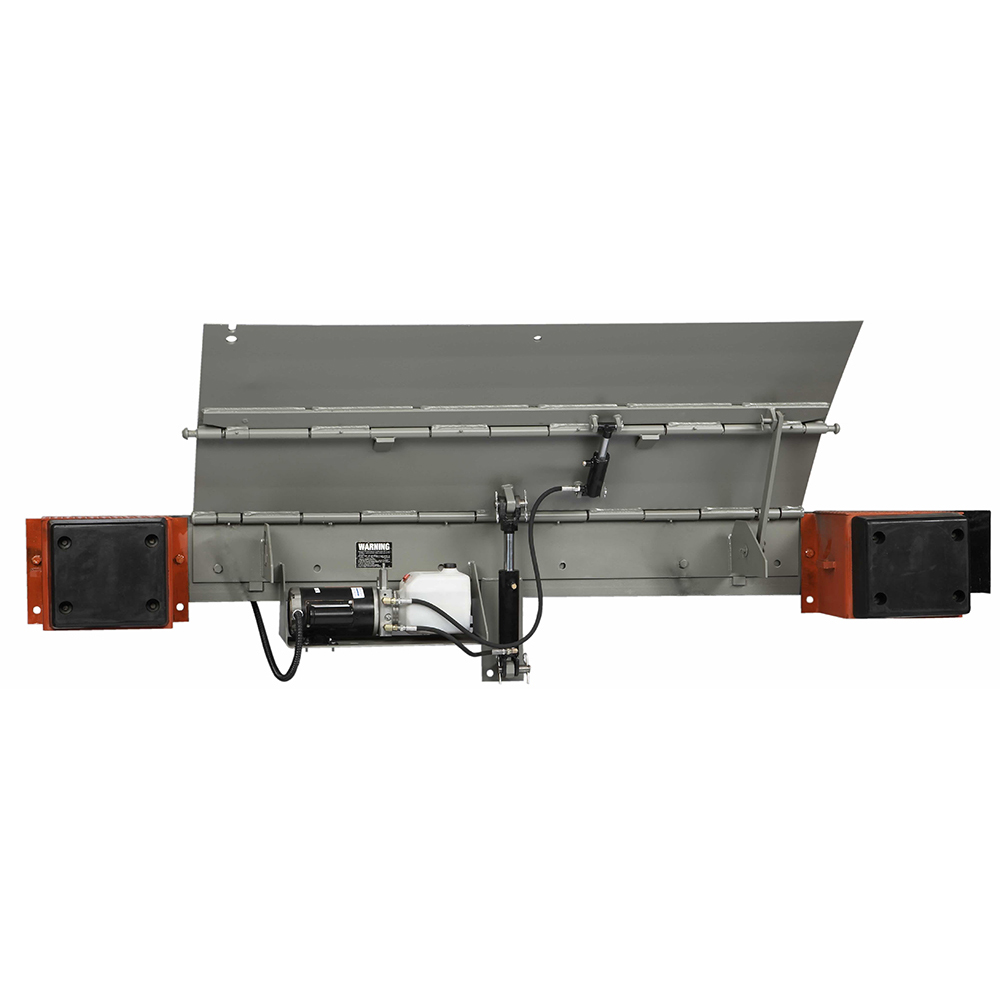Dock Levelers
We offer a range of dock levelers for your warehouse dock, including pit levelers, mechanical dock levelers, hydraulic dock levelers, pneumatic dock levelers, and edge of dock levelers.
Pit Levelers
Integrated and recessed into the dock floor, allowing the leveler to be tucked inside the recess when not used. The pit conceals the leveler mechanism which transitions between the dock and varying truck heights.
Mechanical Dock Levelers
These are manually operated and require physical effort to position the leveler on the trailer bed. They’re very cost-effective but require more maintenance. They typically rely on a spring or torsion mechanism to popup the leveler from the pit and simultaneously kick out the hinged section that will lie on the trailer bed. When this section is kicked out, a restraining mechanism holds the hinged section out so a person can ‘walk-down’ the entire leveler mechanism as it flattens itself out across the trailer bed.
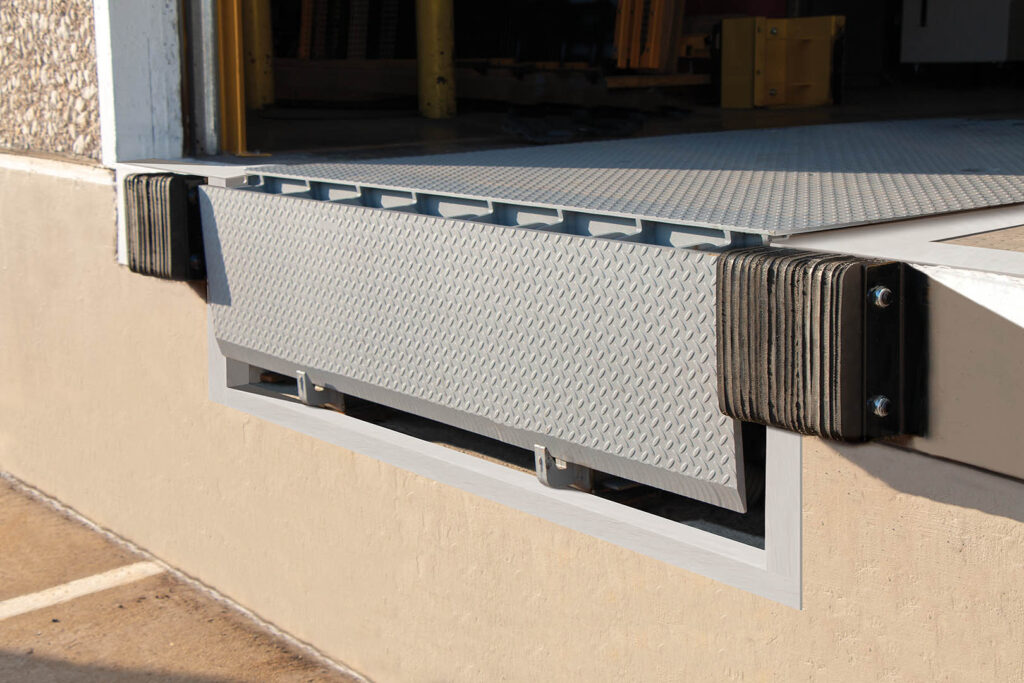
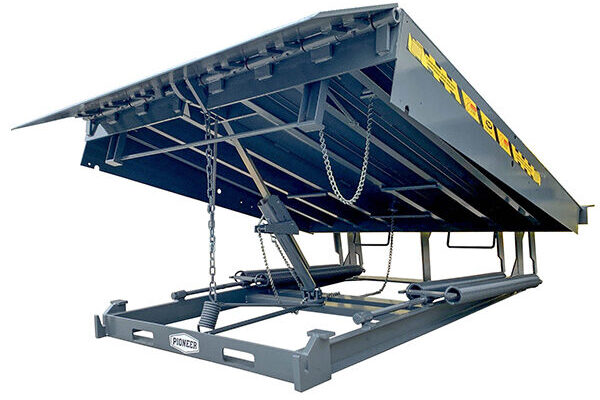
Hydraulic Dock Levelers
These types of levelers are deployed by an electrical control box. A dock attendant pushes a control button which activates the dock leveler’s hydraulic system to smoothly lift, open and move the leveler components into place on the trailer bed. When the truck is ready to leave, the attendant pushes a button and the leveler returns hydraulically to its original position, tucked away in the pit.
- Intuitive control panels
- Durable hydraulics and construction
- Operate easily in diverse climatic ranges
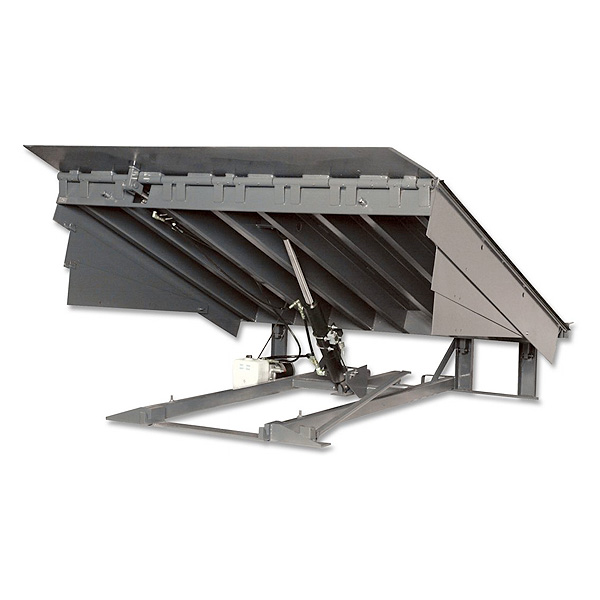
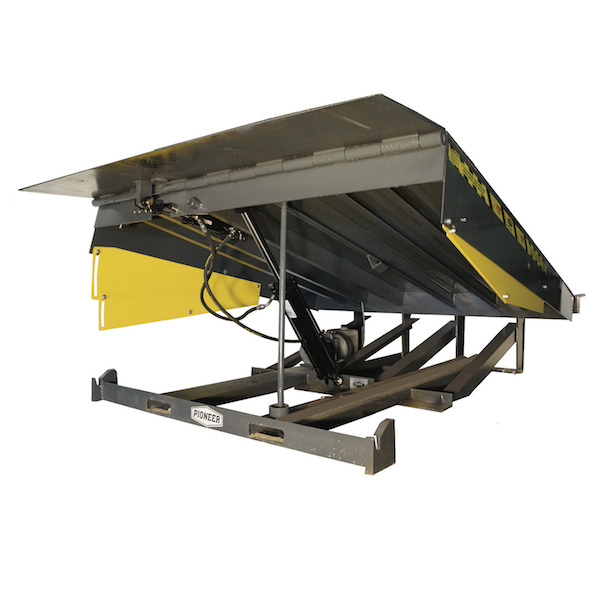
Pneumatic Dock Levelers
Pneumatic dock levelers operate similarly to hydraulic levelers in general but rely on an air bellows that’s inflated by a blower motor. It’s a high-volume, low pressure air system and allows for smooth movement similar to hydraulic systems.
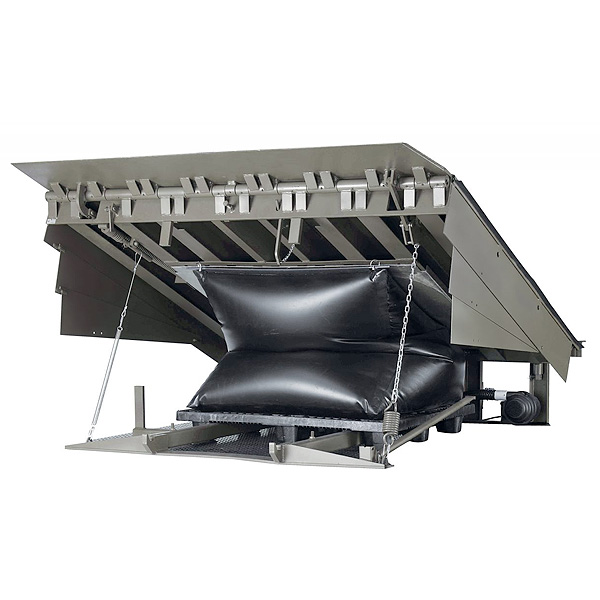
Edge of Dock Levelers
These narrow levelers are mounted at the dock edge and ideal for docks with minimal height difference between the dock and the truck bed. These are best suited for facilities with low-volume material handling. They’re available in mechanical torsion spring assist and hydraulic configurations.
